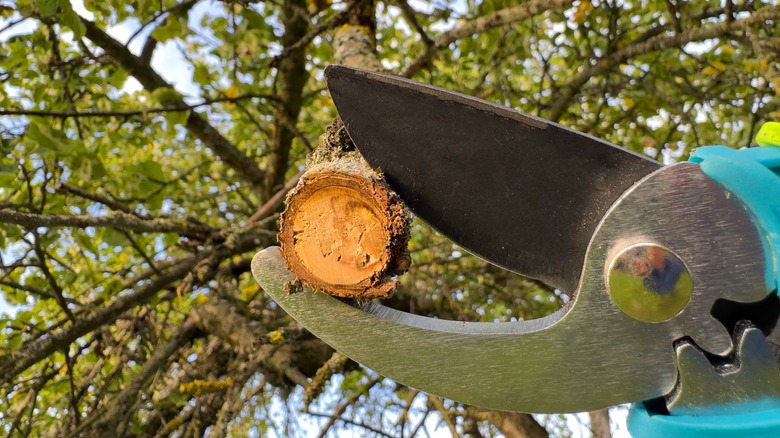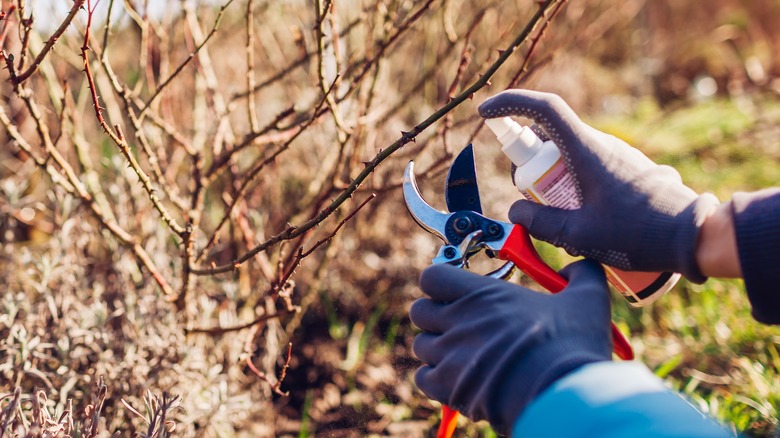Is Using Glue To Seal Fresh Pruning Cuts A Gardening Secret Or Sticky Nightmare?
After pruning a tree or shrub it may seem wrong to just leave the recently cut parts of branches exposed. After all, if a person gets a cut, they usually put a bandage over it to prevent infection. So it seems like trees should also have their cuts protected. While some people opt to put glue or other sealants over these cuts, research has shown that this isn't the best strategy for the vast majority of trees and shrubs and, in fact, is a gardening myth that can damage trees.
The reason glue, paint, and other sealants aren't beneficial (and can even be harmful for many trees) is because plants don't heal the way people and animals do. Instead of a pruning cut truly healing on a tree, the tree instead creates a callus that remains there for the rest of its life. This callus protects the wound from infection and infestations, but many sealants can prevent this callus from forming. Not only that, but the sticky substances can even trap in moisture and encourage rotting.
For most shrubs and trees, the right way to ensure they recover well from pruning is to use clean and sharp tools and prune during the appropriate season, which is usually when the plant is dormant. Ideally, you should even sanitize your tools using isopropyl alcohol before you begin pruning each tree. One possible exception to the general rule of avoiding glue when pruning however, is when working with roses.
Why you may want to use glue to seal pruning cuts on roses
Unlike with most other trees and shrubs, it is often recommended to use glue to seal pruning cuts on roses. This is because the interiors of rose canes are quite soft, leading to pruning cuts easily becoming infested with insects like carpenter bees and other boring insects. While it may not be necessary for smaller canes, using wood or even craft glue is a common practice for protecting pruning cuts on larger rose canes.
Not all experts agree that sealing pruning cuts on roses is required however, and some actively advise against it. It can be a messy business, which is why home gardeners don't bother with it. Many growers who opt to skip the step report minimal, if any, issues with insect damage on their rose canes. As long as you learn how to prune your roses at a 45-degree angle and make sure to only do it while they are dormant, the canes should callous over well, even without glue in most cases.

